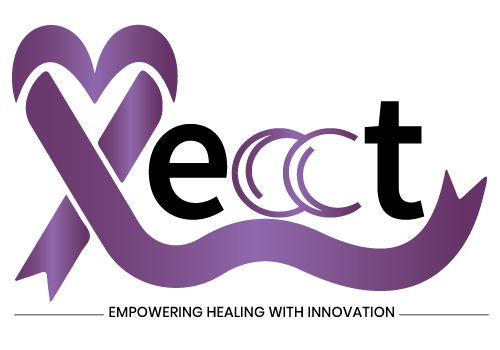ECCT:
Outperform the Competition
Why ECCT Outshines Tumor Treating Fields (TTF) in Cancer Care
A Comparative Analysis of Electro-Capacitive Cancer Therapy and Tumor Treating Fields
Introduction to ECCT and TTF
Both Electro-Capacitive Cancer Therapy (ECCT) and Tumor Treating Fields (TTF) are non-invasive cancer treatments that use electric fields to disrupt the division of cancer cells. However, ECCT and TTF differ significantly in their approach, delivery mechanisms, and overall effectiveness. ECCT has emerged as a more advanced, patient-friendly, and versatile option, offering distinct advantages over TTF. In this section, we will compare these therapies
to demonstrate why ECCT is the superior choice for cancer patients.

Understanding Tumor Treating Fields (TTF)
Tumor Treating Fields (TTF) is a therapy that uses sinusoidal alternating electric fields to target cancer cells during mitosis. The treatment involves placing electrodes directly on the patient’s skin around the tumor site, generating electric fields that disrupt cancer cell division. TTF has shown efficacy in treating certain cancers like glioblastoma, but it comes with limitations, including skin irritation due to electrode contact and a high treatment burden (patients must wear the device for 18 hours daily).

WHY ECCT IS A BETTER CHOICE?
1
Non-Contact Electrodes And Patient Comfort
TTF
Requires direct skin contact with electrodes, which can cause dermatitis and skin irritation over time. Patients need to wear the device for extended periods (up to 18 hours daily).

ECCT
Utilizes non-contact capacitive electrodes, ensuring no direct skin irritation. Patients can comfortably wear the device for 2-6 hours per day, making it less invasive and more manageable.
Primarily used for glioblastoma and limited cancer types, focusing mostly on brain tumors
TTF
Versatility in Cancer Types
2
Effective across a wider range of cancers, including breast, lung, colorectal, and metastatic cancers. It offers broader applicability for patients with advanced or multi-site cancers
ECCT

3
Mechanism of Action
TTF
Operates on sinusoidal electric fields that disrupt cancer cell mitosis but have limited depth and can cause uneven electric field distribution in complex tumor shapes.

ECCT
Uses square wave electric fields, which are more effective in disrupting the polarization of cancer cells during mitosis. The electric field distribution is optimized for better penetration and impact on tumor cells, making it more precise for a variety of tumor geometries
Patients need to wear the device continuously for up to 18 hours per day, severely impacting daily life and mobility
TTF
Ease of Use and
Treatment Burden
4
Patients can use the device for 2-6 hours per day, making it more flexible and easier to integrate into daily routines. ECCT’s portability also allows for easier home-based treatment.
ECCT

5
Side Effect Profile
TTF
Skin irritation and dermatitis are common side effects due to
direct electrode contact. Patients may also experience
discomfort from prolonged use.

ECCT
Minimal side effects, with only occasional nausea or mild localized discomfort reported. The non-contact nature of the device reduces the risk of skin-related issues, making it more tolerable for long-term use

Clinical Efficacy Comparison

Glioblastoma
and Brain Tumors

Metastatic and
Advanced Cancers
Proven efficacy in glioblastoma treatment, extending survival times for patients with this aggressive cancer. However, TTF is limited in addressing other cancer types and has a high treatment burden
TTF
Not widely used for metastatic or multi-site cancers due to limitations in electrode placement and electric field depth
Equally effective in treating glioblastoma, with the added advantage of being effective across a wider range of cancers, including metastatic cases. ECCT’s flexibility makes it a superior option for patients with various forms of cancer.
ECCT
Specifically designed for multi-site and metastatic cancers, offering a solution for patients with tumors in multiple locations. The electric fields can target multiple metastatic nodules simultaneously, making ECCT an ideal choice for advanced cancer cases.
Key Differences Between ECCT & Tumor Treating Fields (TTF)

Consult Our
ECCT
